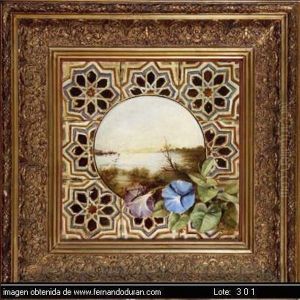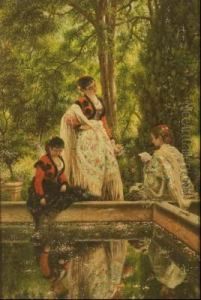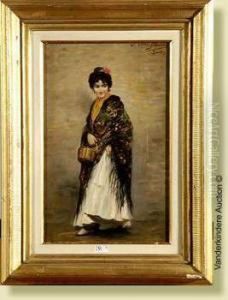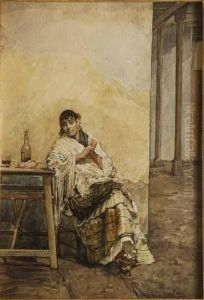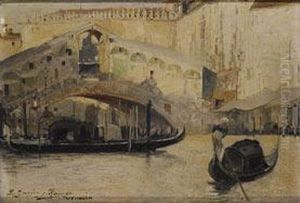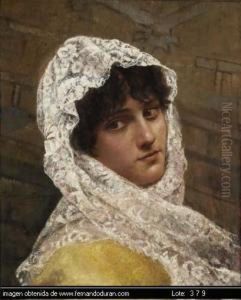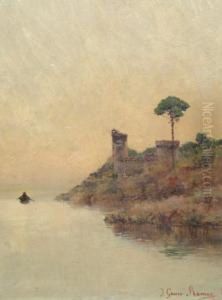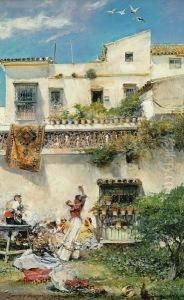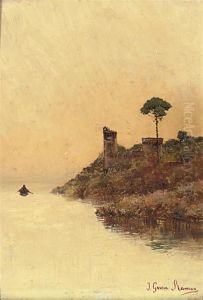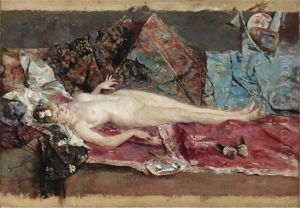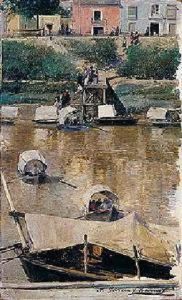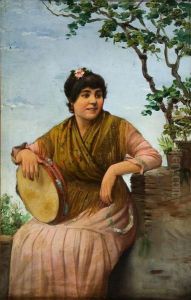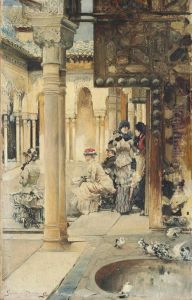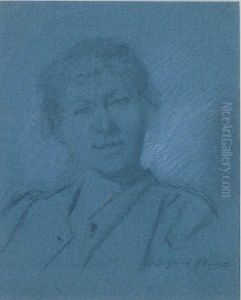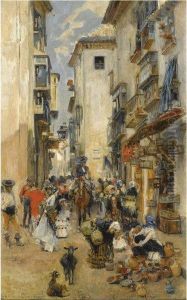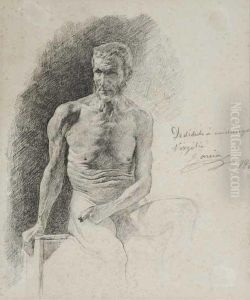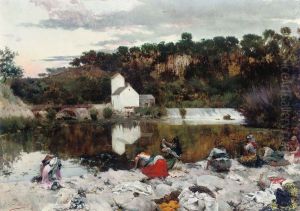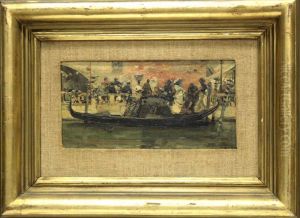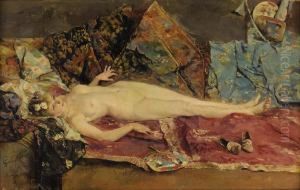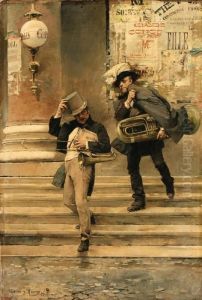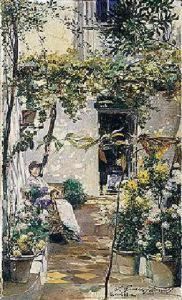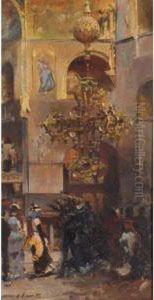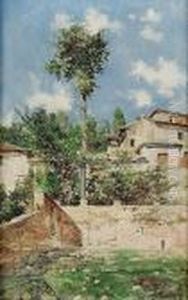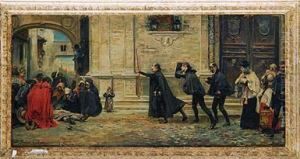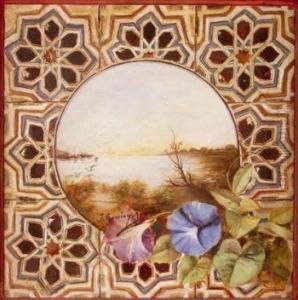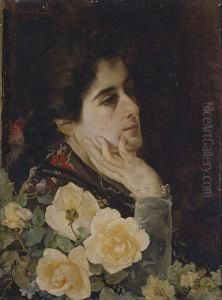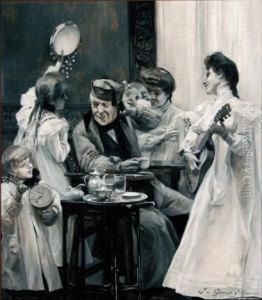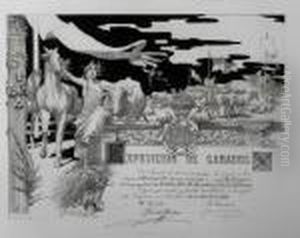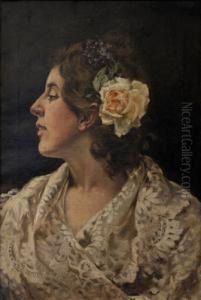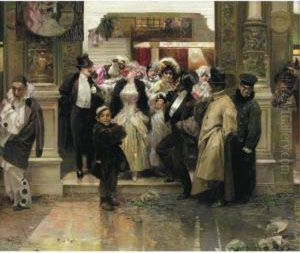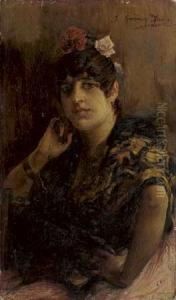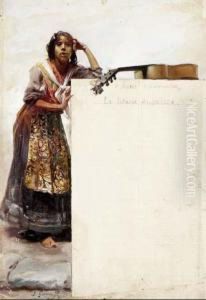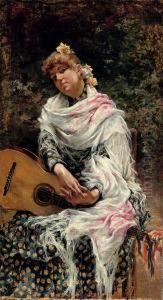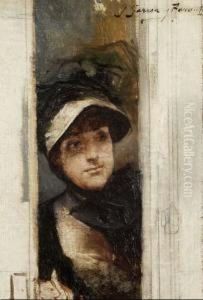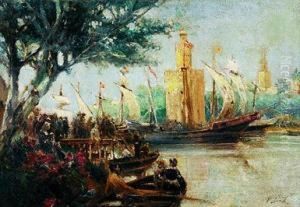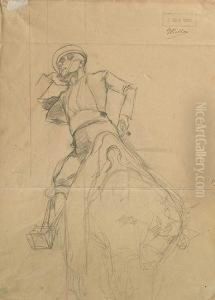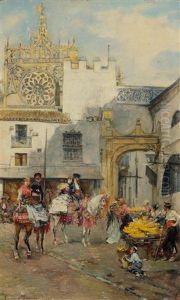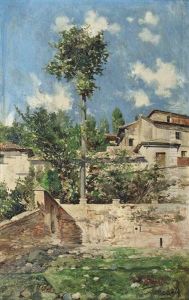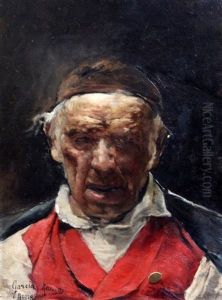Jose Garcia Ramos Paintings
José García Ramos was a Spanish painter known for his work within the genre painting tradition, often focusing on scenes of daily life, folkloric subjects, and traditional Andalusian culture. Born on December 23, 1852, in Seville, Spain, he grew up in a region renowned for its rich artistic heritage, which greatly influenced his artistic development. García Ramos studied at the School of Fine Arts in Seville where he was a pupil of Eduardo Cano de la Peña and later, at the School of Fine Arts in Madrid.
His career began to flourish in the late 19th century, a period marked by a growing interest in regional culture and customs in Spanish art, often referred to as costumbrismo. García Ramos became one of the leading figures in this movement, capturing the essence of Andalusian life with a particular focus on the depiction of women in traditional dress, local festivals, and flamenco dancers.
Throughout his life, García Ramos exhibited his work in numerous exhibitions and won various awards. His paintings were well-received for their vibrant use of color and dynamic composition, as well as their ability to evoke the spirit of Spanish culture. He was also a member of the Seville Artists' Circle and contributed significantly to the cultural life of his hometown.
José García Ramos died on January 10, 1912, in Seville. His legacy is preserved in the form of his artworks which are housed in various institutions and collections, including the Museum of Fine Arts in Seville. His work continues to be celebrated for its contribution to the Andalusian genre painting tradition and for providing a window into the customs and traditions of 19th-century Spain.
